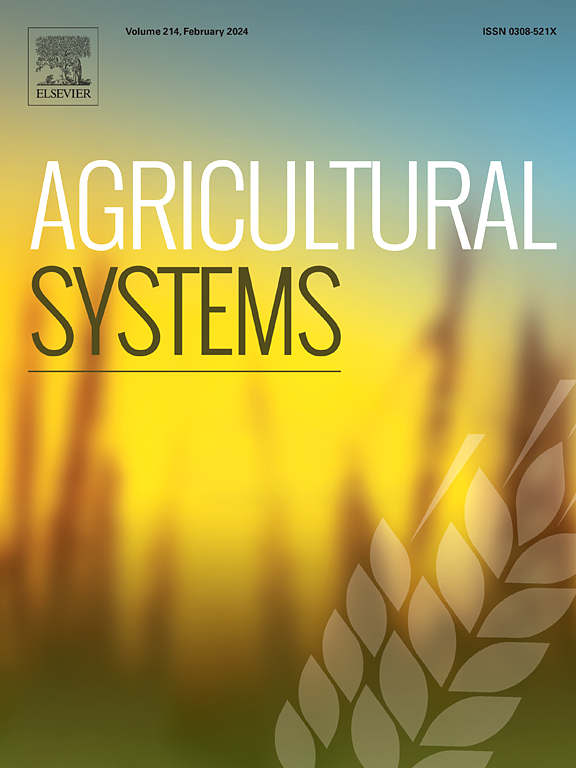Work in agriculture: A blind spot in reducing pesticide use on dairy farms?
IF 6.1
1区 农林科学
Q1 AGRICULTURE, MULTIDISCIPLINARY
引用次数: 0
Abstract
CONTEXT
Implementing alternative practices to the use of pesticides involves work issues that can limit adoption of these practices, particularly on dairy farms. Depending on how practices change, work organization may completely change, additional skills and knowledge may be required, and system complexity may increase, inducing a higher mental workload. This can result in an excessive total workload for already overburdened farmers.
OBJECTIVE
The present study examines whether work limits the implementation of alternative practices to reduce pesticide use on dairy farms, depending on the amount of change the practices require. Three work dimensions were considered: work organization, skills and knowledge, and physical and mental workload.
METHODS
We used nine semi-structured interviews with crop and livestock experts in Brittany (France's leading region for dairy production) to classify multiple categories of practices by their degree of difficulty and the type of work dimension involved, with a specific focus on three practices: using resistant crop varieties, mechanical weed control and extending crop rotations.
RESULTS AND CONCLUSIONS
First, experts emphasized certain alternative practices over others depending on the institution to which they belonged. Second, the need to balance the feeding system and an increase in herd size, which is not compatible with all alternative practices, were barriers specific to dairy farms. Third, all three practices we focused on were skill- and knowledge-intensive, but in different ways. Using resistant crop varieties requires access to the right information, while mechanical weed control raises issues of training, investment or outsourcing. Finally, extending crop rotations, considered as a redesign of the production system, requires obtaining the resources, time and autonomy to think about new rotations.
SIGNIFICANCE
This study shows that, in addition to work organization, other work dimensions are crucial for reducing pesticide use on dairy farms.

求助全文
约1分钟内获得全文
求助全文
来源期刊

Agricultural Systems
农林科学-农业综合
CiteScore
13.30
自引率
7.60%
发文量
174
审稿时长
30 days
期刊介绍:
Agricultural Systems is an international journal that deals with interactions - among the components of agricultural systems, among hierarchical levels of agricultural systems, between agricultural and other land use systems, and between agricultural systems and their natural, social and economic environments.
The scope includes the development and application of systems analysis methodologies in the following areas:
Systems approaches in the sustainable intensification of agriculture; pathways for sustainable intensification; crop-livestock integration; farm-level resource allocation; quantification of benefits and trade-offs at farm to landscape levels; integrative, participatory and dynamic modelling approaches for qualitative and quantitative assessments of agricultural systems and decision making;
The interactions between agricultural and non-agricultural landscapes; the multiple services of agricultural systems; food security and the environment;
Global change and adaptation science; transformational adaptations as driven by changes in climate, policy, values and attitudes influencing the design of farming systems;
Development and application of farming systems design tools and methods for impact, scenario and case study analysis; managing the complexities of dynamic agricultural systems; innovation systems and multi stakeholder arrangements that support or promote change and (or) inform policy decisions.
 求助内容:
求助内容: 应助结果提醒方式:
应助结果提醒方式:


